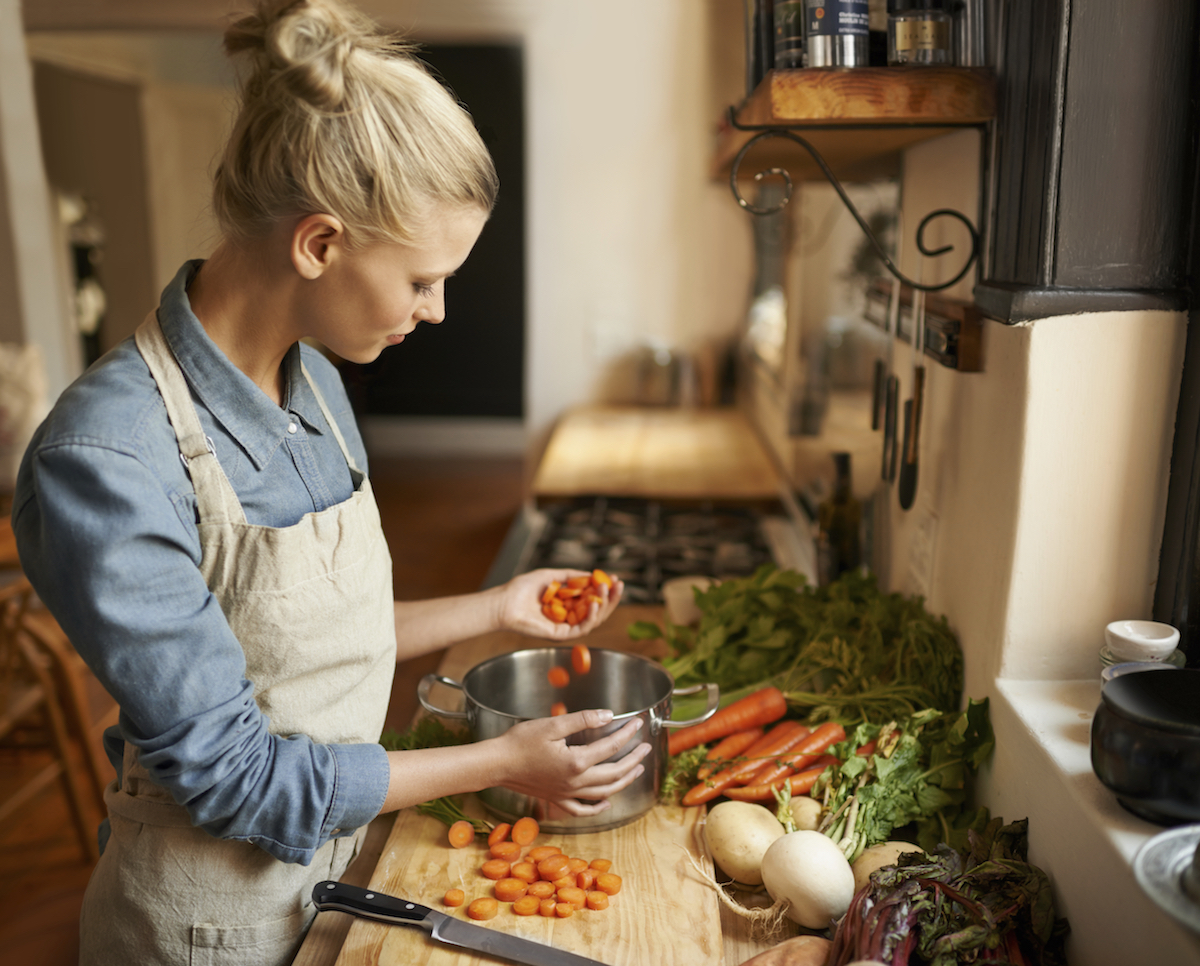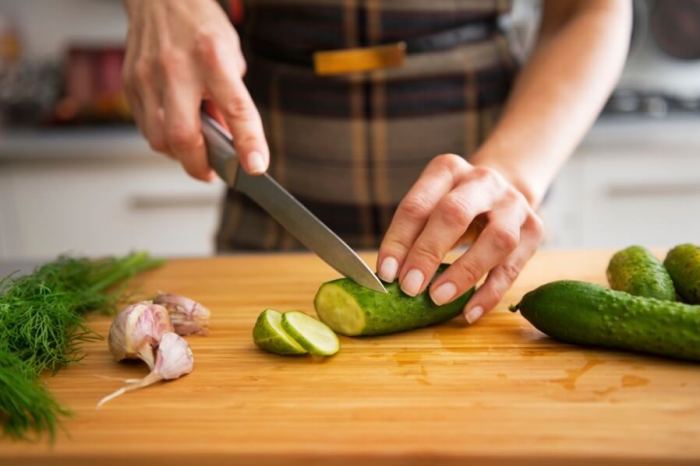Turns out eating on a budget isn’t an oxymoron – in fact, you’ve probably been throwing out one of the solutions for years. What do we mean? Fruit and veggie scraps! That’s right. You can save money – and load up on good-for-you nutrients – by eating food parts you might think are destined to be trimmed away. “I love [leafy] carrot tops and chimichurri sauce is one of my favorite ways to use them,” says Shirlee Rosen, R.D.N. “I recommend carrot tops to my clients because they’re very low in calories – a cup contains only 88 – they’re rich in vitamin A, contain six times more vitamin C than the roots (vitamin C is great for your immune system) and they’re high in antioxidants.” To make carrot green chimichurri, finely chop your carrot greens and mix them with your choice of dried spices (think: oregano, cumin, paprika, red pepper), minced garlic, vinegar and olive oil. Then serve the mixture with roasted carrots, sliced baguette or grilled fish/meat. Broccoli leaves are another oft overlooked low calorie and nutrient rich option. “Use them in stir-fry or your savory smoothie as you would any dark green leafy vegetable,” suggests Rosen. “You can also make broccoli leaf chips. Toss the leaves with olive oil, sea salt, pepper and some garlic powder and roast at 375 degrees for about four minutes.” According to Rosen, not only have broccoli leaves been shown to have higher amounts of beta-Carotene — an antioxidant that’s beneficial for skin and eye health — than any other part of the broccoli, but they contain more fiber and are high in vitamins A and C, both beneficial for boosting your immune system. Here’s another one that might surprise you: onion skins.
“They contain concentrated amounts of flavonoids [phytonutrients], which are antioxidant-rich and anti-inflammatory, and work well when simmered into soup,” Lyssie Lakatos and Tammy Lakatos Shames, the registered dieticians and nutritionists known as The Nutrition Twins, wrote in an email. Celery leaves are also quick and easy to integrate into your kitchen habits. “They have a flavor similar to parsley,” according to Lakatos and Shames, who recommend adding them to your salads, smoothies and soups. While you might think yourcitrus peels(lemon, lime, grapefruit, tangerine) are good for little more than zest, they’re not only rich in vitamin C, beta-Carotene and folate, but they’re wholly delicious. “We suggest oven-drying them and then grinding them down into a powder,” they say. “Then use the powder to flavor soups, teas, when roasting chicken/fish or infuse it in a cocktail or water.” And if you’re sick of spinach, try beet greens.
“Boil them for about a minute in an open pot,” says Rosen. Enjoy them on their own or in any recipe as a spinach substitute (think omelet).Beet greensare an excellent source of vitamins K, A, E, C and B12, potassium, magnesium, fiber, calcium and iron. An increased intake of dark green leafy vegetables has beenassociated with lowering the risk of certain chronic diseases, including type 2 diabetes, high blood pressure, cardiovascular disease and stroke. Feeling inspired? “You can use almost any scrap you can think of — carrot peels, herb stems, leek tops, green onion ends, stems and ribs from chard, kale and other greens — to make homemade vegetable stock,” suggest the Nutrition Twins. You’ll need about four to six cups of mixed scraps, which you can collect in a large ziplock freezer bag. Here’s to cooking from root to stalk!
How to cook with fruit and veggie scraps

ISTOCK
























